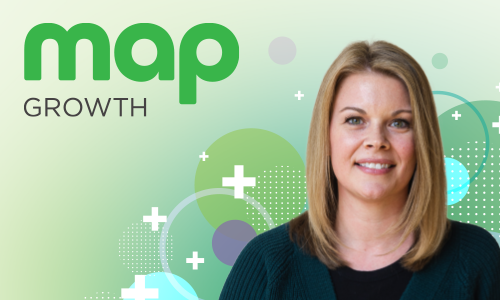 “My students could never do that! It’s too hard!” You’ve probably heard a colleague say this or even said it yourself. I think we can all agree that it’s good for teachers to understand their students and be familiar with their skills and knowledge. But “it’s too hard” can become a trap that keeps kids busy with low-level, repetitive tasks even when they’re actually capable of high-level, abstract thought. So, what exactly do we mean when we say something is “too hard” for a student, and what can be done to address it? It all comes down to understanding difficulty and complexity in K–12 education.
“My students could never do that! It’s too hard!” You’ve probably heard a colleague say this or even said it yourself. I think we can all agree that it’s good for teachers to understand their students and be familiar with their skills and knowledge. But “it’s too hard” can become a trap that keeps kids busy with low-level, repetitive tasks even when they’re actually capable of high-level, abstract thought. So, what exactly do we mean when we say something is “too hard” for a student, and what can be done to address it? It all comes down to understanding difficulty and complexity in K–12 education.
There are many aspects of a task that can present a challenge for students. Some students have difficulty with tasks that involve a large quantity of reading or writing. Others need extra support with multi-step directions. A student’s background knowledge can also be a factor. Whatever the cause, all obstacles can be broken down into two main components: difficulty and complexity. These two concepts are distinct from one another, and teachers who understand the difference can control both to get the greatest value from their assignments and assessments.
Definitions
“Difficulty” can be defined as how much effort a task requires. This is different for each individual because what’s hard for one person might not be hard for another. Think about a task such as writing the alphabet. You can imagine a kindergarten student with a thick pencil clutched tightly in her fist, laboriously scratching out the strokes needed to form each letter. If you assign the same task to a typical middle school student, the whole alphabet will be scrawled out almost as quickly as you can give the directions. Easy!
“Complexity,” on the other hand, is related to the cognitive processes required to complete a task. Think about Bloom’s Taxonomy or Webb’s Depth of Knowledge. These frameworks address the type of thinking involved in academic content, and they are the same no matter who is doing the work. Memorization, analysis, or synthesis involve the same parts of the brain, regardless of age, gender, or academic background.
Any assignment or assessment can be evaluated in terms of either its difficulty or its complexity. Take MAP® Growth™, for example. The RIT score of a MAP Growth item reflects the relative difficulty of the item. Easier items have a lower RIT score; more difficult items have a higher RIT score. RIT is not a measure of the complexity of a passage or a question but, instead, is drawn purely from whether students find it difficult to answer. Meanwhile, complexity can be seen in the qualitative analysis of a passage. We can evaluate what areas of a text are complex—maybe the vocabulary, sentence structure, or themes. If a passage has themes that are subtle, it is more complex than a passage with explicitly stated or clearly implied themes, and this is true no matter who is reading the passage.
Implications
Everything you ask students to do has components of both complexity and difficulty in K–12 education.
Think about some hypothetical tasks you might assign and where they fall in terms of difficulty and complexity, as well as how those components can be adjusted. Remember that difficulty is how much effort something takes, while complexity is the type of thinking involved. Asking kindergarten students to name two animals after a recent zoo field trip is at a very low level of complexity (memorization), and it’s probably pretty easy for most students. Asking them to name every animal they saw in the order they were encountered still only calls for basic recall, but it’s clearly going to be more difficult for many of them. A much more complex task, involving analysis and synthesis, would be to ask students to talk with a partner about how two animals, say the lion and the giraffe, were the same and different. Although the thought processes are complex, most kindergarten students could do this easily.
Although difficulty does vary by person, there are some commonalities. In general, more reading, more writing, or more steps make something harder for students. Some generalizations can also be made across groups. For example, students with dysgraphia or other writing difficulties will find written tasks harder than classmates without such challenges. So, while you can’t pinpoint the exact difficulty of a task for any given student, you can still address factors that tend to make assignments harder for students generally.
When you consider complexity and difficulty, you can better address the concern that something “is too hard” for your students. There are very few instances where difficulty is something to strive for. If you’re trying to increase your students’ stamina for reading or writing, you might ask them to do something that’s hard for them: focus for longer and longer periods of time. In almost every other case, difficulty should be cleared away so students can access the level of complexity appropriate to the task.
While difficulty is a problem, complexity is for everyone. Of course, higher complexity is not always necessary and is not always the best choice; children do sometimes need to memorize facts and understand them, as described by the lower levels of Bloom’s Taxonomy. But all students—including young students, students with disabilities, and English language learners—are capable of complex thought if the difficulty of the task does not get in the way. Children engage in sophisticated thought such as analysis, planning, and judging all the time. Have you ever asked a toddler to pick out his clothing for the next day or what she wants at her birthday party? No memorization there, just surprisingly sophisticated thought processes.
Controlling complexity and difficulty in K–12 education
Whether you’re planning a classroom assignment or creating an assessment, it’s important to keep difficulty and complexity in mind. While it might seem that asking students to do something “hard” is challenging them, most of the time, difficulty is just an obstacle for students to overcome, an obstacle that can impede your awareness of what students really understand. By reducing difficulty for all your students, you can remove barriers to complex thinking and allow kids to engage in meaningful learning.
As you are planning an activity, think about what might make it difficult for students and how you can reduce that difficulty. Common examples include:
- Reduce the amount of writing required and, when appropriate, allow students to use a keyboard instead of a pen or pencil
- Adjust the number of steps or problems to complete
- Increase the amount of time provided
- Chunk texts to reduce the amount students need to read and comprehend at one time
- Provide graphic organizers, dictionaries, and other tools
- Use the Universal Design for Learning (UDL) principles to ensure accessibility
Once you have adjusted the level of difficulty required to complete a task, you can consider the complexity of what you’re asking students to do. Complexity can build from low to high over a series of activities, assignments, or questions. For example, you might begin by asking students to name the characters (memorization), then to retell important plot points (understanding) before moving on to more inferential questions and finally asking students to evaluate a character’s decisions or to create a new ending based on their understanding of the text. Again, even young students or emerging readers are capable of this kind of thought. To add complexity to a task, you can rephrase questions or change the type of task, for example, adding an element of explanation or comparison to what was previously a basic recall activity.
Complexity and difficulty in practice
Here are some examples of classroom activities that minimize writing, one of the most common sources of difficulty for many children. These activities represent a range of complexity and can be used with students of any age with slight modifications. For example, most high school students can be expected to write a sentence or two in addition to completing the described task, while younger students might be limited to recording a few words or using preprinted statements.
Label or color code a picture, diagram, or map
- High school students could be given a map of the colonial United States. Their task might be to shade in the colonies they felt were most impacted by the Stamp Act or to create a legend and add symbols to the map to show the relationships between various colonies and European countries.
- Second-graders could be asked to label each step on a diagram of the water cycle. Although writing a few words should not be difficult for most second-graders, the task could be made easier by providing prewritten labels for students to tape or glue in the appropriate spot.
Sequence or rank several statements or images
- Seventh-graders might be asked to arrange a set of historical events from most impactful to least impactful.
- Third-graders could rank a list of character traits from best to worst. This activity could be used to help students understand shades of meaning (for example, the difference between being unkind, mean, and cruel) or to judge the value of different traits (for example, whether it is better to be generous, funny, or smart).
Mark where a character, object, or item falls on a continuum or scale
- Fifth-grade students could be given a list of characters from a book and be asked to place their name at the appropriate spot along a continuum ranging from least important to most important.
- First-graders could be asked to rate the importance of several jobs studied in a unit about community on a scale from one to ten.
- Students of any age can be asked to evaluate statements using symbols such as smiling/frowning faces or thumbs up/down.
Create a storyboard
- Students of any age can create a storyboard or comic strip to show their understanding of a series of events, a process, or a concept. Students incapable of creating recognizable drawings could use a storyboarding app or dictate captions explaining the content.
Categorize by circling or marking items
- Kindergarten students might be given a list of storybook characters and asked to circle two they think are most alike.
- Fourth-graders could be asked to draw arrows on a page showing animals to demonstrate a food chain or a food web.
For many of these examples, the value of the activity might come as much from the follow-up discussion as it does from the initial task. Placing a character on a continuum does require students to understand and evaluate the character, but even more complex thinking occurs if they then work with a partner or small group to compare and justify their decisions. The examples here were also designed to almost entirely eliminate writing, but they could be easily adapted by having students write a sentence or a paragraph explaining their response.
In closing
Of course, none of what I’ve described about difficulty and complexity in K–12 education is absolute. There is no way to fully predict what will be difficult for every single student, and there are times when eliminating difficulty just might not be feasible. Sometimes students really do have to memorize a bunch of facts or do a lot of writing. By understanding the difference between complexity and difficulty, however, you can engage your students in rich, high-level activities without having to worry that “That’s too hard for my kids!”





